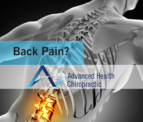In the late 1990s, an article published on the safety of chiropractic treatment of children also revealed significant benefits for children who received chiropractic treatment.
This article was written in response to safety concerns due to the increased utilization of chiropractic for various pediatric conditions.
One primary topic of discussion included the neurological and vascular complications associated with chiropractic treatment in pediatric patients.
This topic has been reviewed previously in adult patients and much of the same concerns can be associated with the pediatric patient.
The likelihood of a vascular injury in a pediatric case is certainly less than in the adult patient due to the pliability and flexibility of the neurovascular structures.
The incidence in the occurrence of stroke in teenagers (children under 15 years of age) is reportedly at a rate of 2.7 per 100,000 children was reported.
However, based on an extensive search dating back 32 or more years, only two reported cases of neurovascular complications related to pediatric patients who had received chiropractic care were found.
Based on the data derived from multiple sources, a conservative estimate of the number of pediatric visits to chiropractors in the United States over the same time frame amounted to over 500 million treatments.
THE REVIEW CONCLUDED THE CHANCE OF A NEUROVASCULAR COMPLICATION ARISING FROM THE CHIROPRACTIC TREATMENT WAS APPROXIMATELY 1 OUT OF 250 MILLION VISITS.
The article concluded the benefits outweigh the risks when applying cervical spine manipulation to any individual, including the pediatric population.
Based on their review, chiropractic care, as it relates to neurovascular complications, presents little risk to the pediatric patient. Even less than the general non-pediatric population which too, is extremely rare.
One other risk cited in its paper was potential damage to the growth plate (epiphysis – the growing ends of bones) of the growing child. However, in the 32+ year review, no reported research documentation could be found supporting this claim.
Another article reported ways in which parents might be able to detect spinal problems in children.
Unless an obvious trauma such as a trip and fall has occurred, it can be challenging in some cases to detect spinal issues, similar to the dentist discovering a non-symptomatic cavity.
More obvious findings parents can detect may include head tilt or leaning to one side, the child turning their whole body rather than their neck to converse or look at someone, sleep interruptions, a child rubbing their own neck, feeding /nursing difficulties on one side and crying/agitated behavior compared to the child’s “usual” behavior.
When children are able to communicate, they may complain of aches that many refer to as “growing pains.”
Less documented / anecdotal evidence that might suggest nervous system dysfunction include persistent earaches, sore throats, colic, headaches, bed-wetting, and others are conditions that parents may bring their children for chiropractic treatment.
http://www.chiroweb.com/mpacms/dc/article.php?id=37423 Dynamic Chiropractic – September 7, 1998, Vol. 16, Issue 19 Chiropractic — Is It Safe for Children? By Claudia Anrig, DC; Claudia Anrig, DC Clovis, California
http://www.chiroweb.com/mpacms/dc/article.php?id=41406 Dynamic Chiropractic – July 29, 1994, Vol. 12, Issue 16
A Parent’s Guide to Chiropractic Care for Children Peter Fysh, DC San Jose, California



